The key of C minor contains the notes: C – D – Eb – F – G – Ab – Bb

When assembled in order the notes form the C natural minor scale (aka Aeolian mode). For a quick breakdown of the key differences between the natural minor, harmonic minor, and melodic minor scales click here.
why are the accidental notes in the key of Cm shown as flats and not sharps?
In the key of C minor, accidentals (e.g. sharps and flats) are typically shown as flats instead of sharps for the sake of simplicity and readability.
Here’s why:
- Relative Major-Minor Relationship: C minor is the relative minor key of Eb major. When you write the notes of C minor with flats, you maintain the relationship with Eb major, which has three flats in its key signature (Eb, Ab, and Bb). This allows for consistency and ease of transition between related major and minor keys.
- Minimizing Accidentals: Flats are often preferred in keys like C minor because they result in fewer accidentals and simplify the notation.
- Historical Convention: Using flats in minor keys has been a common practice in western music notation for centuries. This convention simplifies reading and interpretation for musicians.
Keep in mind, while C minor is usually notated with flats (Bb, Eb, Ab) the use of sharps is not necessarily incorrect if the musical context demands it. The choice of notation often depends on the composer’s preference and the key signature of the piece, but using flats in the key signature of C minor is more common.
The C Minor Scale Step Pattern

The C minor scale (like all minor scales) follows the step pattern of:
whole, half, whole, whole, half, whole, whole
The C Minor Scale on Guitar
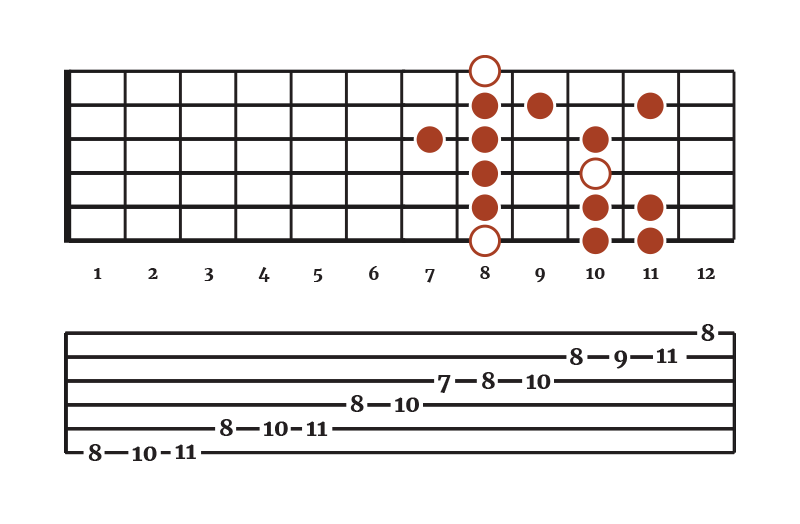
Keep in mind scales can be played in many different ways.
Chords In The Key Of C Minor
All chords within a minor key such as C minor follow a step pattern of:
minor, diminished, Major, minor, minor, Major, Major
| min | dim | Maj | min | min | Maj | Maj |
| c | d | Eb | f | g | Ab | Bb |
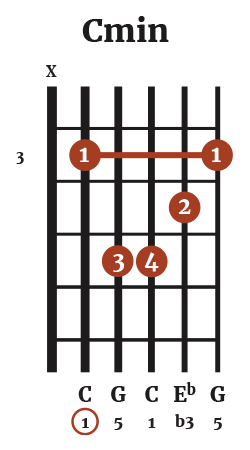

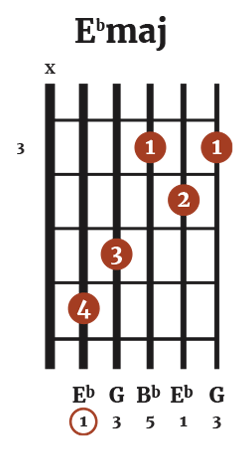
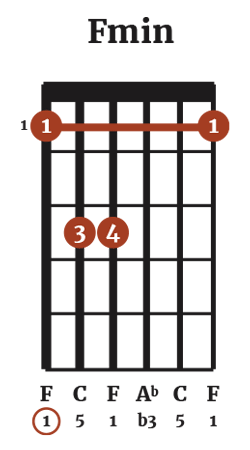
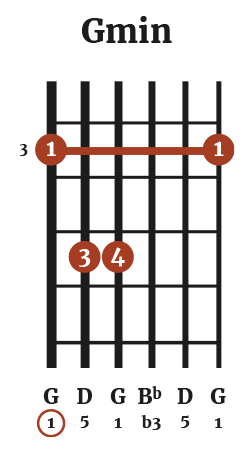
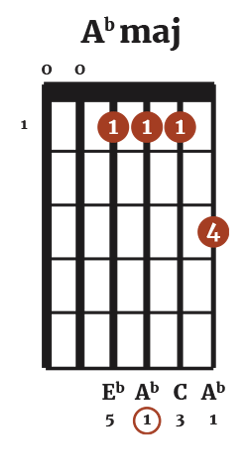
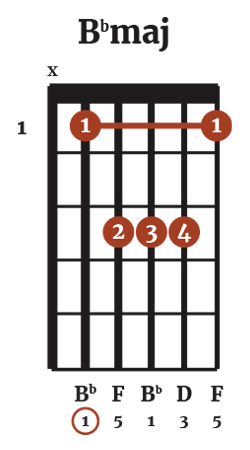
To create a minor chord, start by establishing a major chord based on the 1st, 3rd, and 5th notes of the accompanying major scale. For example, the C major scale gives us the notes C (1), E (3), and G (5).
To transform this into a C minor chord, simply lower the 3rd (the 3rd scale degree of the major scale) a half step (1 fret). This transforms the chord quality to minor, giving us the notes C(1), Eb(b3), and G(5).
| Chord | Notes |
| c minor | C, Eb, G |
| d diminished | D, F, Ab |
| Eb Major | Eb, G, Bb |
| f minor | F, Ab, C |
| g minor | G, Bb, D |
| Ab Major | Ab, C, Eb |
| Bb Major | Bb, D, F |
7th Chords in C Minor
Seventh chords are four-note chords (as opposed to triads which contain 3) that include the root, third, fifth, and seventh scale degrees of a diatonic scale (a seven-note musical scale consisting of a specific pattern of whole and half steps).
The seventh chord quality can vary depending on the type of seventh interval used in the chord. There are several types of seventh chords, each with its unique sound and function in music.
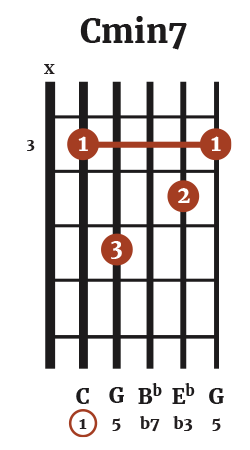
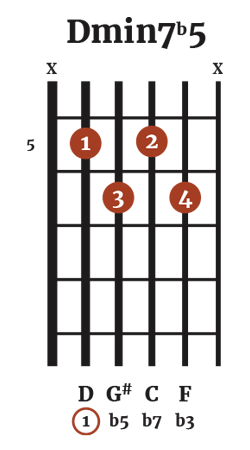
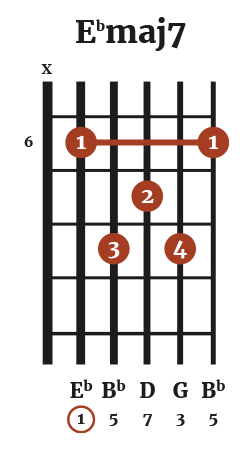
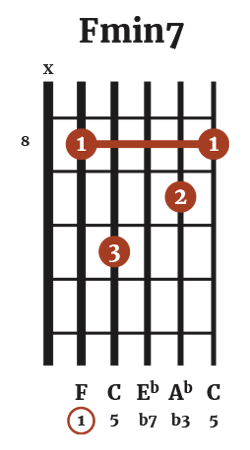
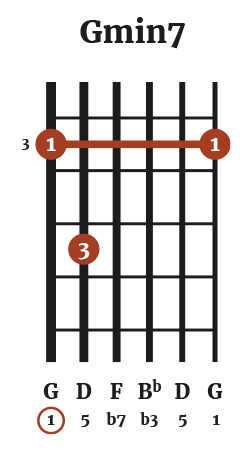
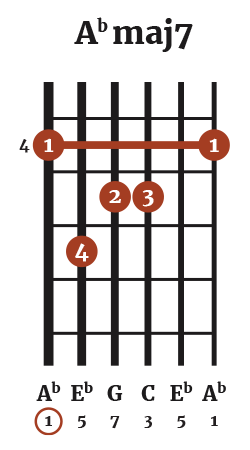
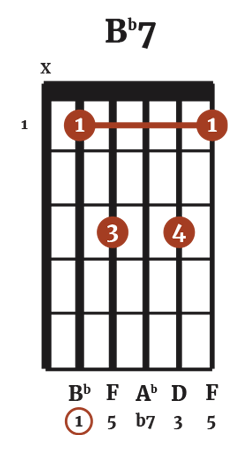
| Chord | Notes |
| c minor 7 | C, Eb, G, Bb |
| d minor seventh flat five | D, F, Ab, C |
| Eb Major 7 | Eb, G, Bb, D |
| f minor 7 | F, Ab, C, Eb |
| g minor 7 | G, Bb, D, F |
| Ab Major 7 | Ab, C, Eb, G |
| Bb Dominant 7 (G7) | Bb, D, F, Ab |
Chord Function
Chords play roles within keys due to the interplay between the notes that make up the chords.
| Tonic | Supertonic | Mediant | Subdominant | Dominant | Submediant | Subtonic |
| i | ii | III | iv | v | VI | VII |
| cm | ddim | Ebmaj | fmin | gmin | Abmaj | Bbmaj |
Understanding chord function within minor keys allows musicians to explore the emotional and harmonic possibilities of minor tonalities.
For example, The i chord (minor tonic) serves as the central point of stability in a minor key. As it is constructed on the tonic note of the minor scale (e.g., C in the key of C minor). This chord provides a sense of resolution in minor key compositions.
Alternatively, In the key of C minor, the dominant chord is gmin which creates a strong pull toward the tonic chord, C minor, creating a sense of resolution when the chord progression resolves back to the tonic.
Common Chord Progressions In C Minor
| i – VI – VII | cmin – Abmaj – Bbmaj |
| i – VII – iv- VI | cmin – Bbmaj – fmin – Abmaj |
| i – v – VI – VII | cmin – gmin – Abmaj – Bbmaj |
| i – III – VII – VI | cmin – Ebmaj – Bbmaj – Abmaj |
| i – v – iv – VII | cmin – gmin – fmin – Bbmaj |
Relative Major
Relative major refers to the major key that shares the same key signature as a minor key. In other words, they use the same set of notes, but their tonal centers (the tonic) are different e.g. the relative minor starts on the 6th scale degree of the relative major. In a minor key, the relative major’s tonic note is the 3rd scale degree of the relative minor scale, meaning in the key of C minor, Eb Major is the relative major.
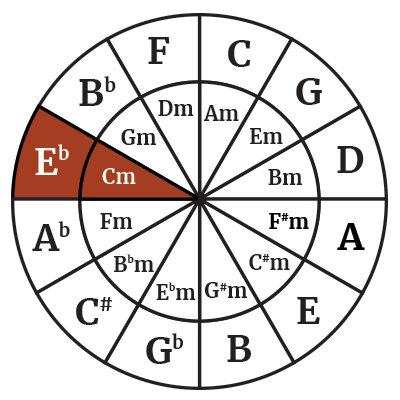
Resources
- PDF download showing the notes, scales, and chords in the key of C minor.
- Learn how to read chord charts
- Learn how to read guitar tab
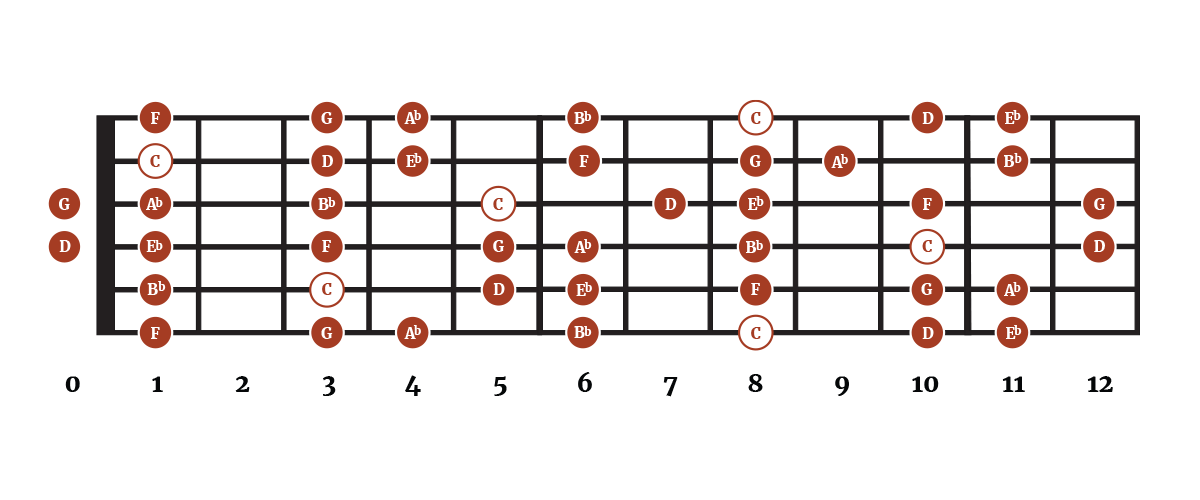


![Mastering Musical Keys on Guitar [Complete Guide] 6 Mastering Musical Keys on Guitar](https://theacousticguitarist.com/wp-content/uploads/2023/11/mastering-musical-keys-on-guitar.jpg)
